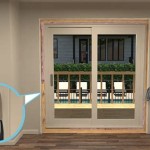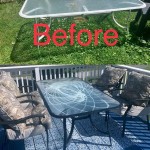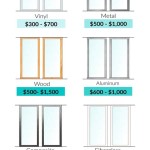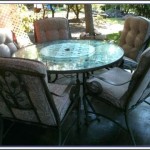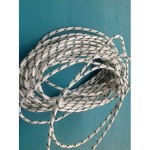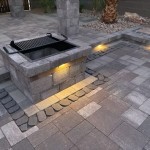Restaurant Patio Table And Chairs: A Guide to Selection and Optimization
The selection of restaurant patio table and chairs is a crucial decision that significantly impacts the overall ambiance, functionality, and profitability of an outdoor dining space. These pieces of furniture are not merely functional; they are essential components in creating a positive customer experience, extending the restaurant's seating capacity, and enhancing its aesthetic appeal. A thoughtful approach to selecting patio furniture requires consideration of various factors, including material durability, style compatibility, space constraints, and budget limitations. The following provides a comprehensive discussion on choosing the right restaurant patio table and chairs to optimize the outdoor dining experience.
Durability and Material Considerations
The longevity of restaurant patio furniture is directly tied to the materials used in its construction. Outdoor furniture is exposed to a range of environmental factors, including sunlight, rain, wind, and temperature fluctuations. Selecting materials that can withstand these elements is paramount to minimizing maintenance costs and maximizing the return on investment. Several common materials are used in the construction of restaurant patio table and chairs, each offering a unique set of advantages and disadvantages.
Aluminum: Aluminum is a popular choice due to its lightweight nature, resistance to rust, and relative affordability. Powder-coated aluminum provides an additional layer of protection against scratches and fading. However, aluminum can become hot to the touch in direct sunlight and may require cushions for added comfort. Its light weight can also be a disadvantage in windy environments, as furniture may be easily blown over.
Wrought Iron: Wrought iron is known for its durability and classic aesthetic. It is a heavy material that provides stability in windy conditions. However, wrought iron is susceptible to rust if not properly maintained and can require regular painting or powder-coating. Its weight can also make it difficult to move furniture around, which may limit flexibility in patio arrangement.
Wood: Wood offers a natural and warm aesthetic that is appealing to many restaurant patrons. Teak, cedar, and redwood are commonly used for outdoor furniture due to their natural resistance to decay and insects. However, wood requires regular maintenance, such as sealing or staining, to prevent warping, cracking, and fading. The cost of high-quality wood furniture can also be a significant factor.
Resin/Plastic: Resin or plastic furniture is a budget-friendly option that is resistant to water damage and fading. It is also lightweight and easy to clean. However, lower-quality resin furniture may be prone to cracking or breaking under stress. Recycled plastic furniture is an environmentally friendly alternative that offers similar benefits while reducing waste.
Wicker: Wicker furniture, traditionally made from natural materials, is now often constructed from synthetic fibers like resin. Synthetic wicker is durable, weather-resistant, and easy to maintain. It offers a stylish and comfortable seating option for restaurant patios. However, the quality of synthetic wicker can vary, so it is important to choose a reputable manufacturer.
When selecting materials, it is essential to consider the specific climate and environmental conditions of the restaurant's location. Restaurants in coastal areas, for example, may need to prioritize materials that are resistant to salt air and humidity. Restaurants in regions with harsh winters should choose furniture that can withstand cold temperatures and snow.
Style, Functionality, and Space Optimization
The style of restaurant patio table and chairs should complement the overall aesthetic of the establishment and enhance the dining experience. Functionality is equally important, as the furniture must be comfortable, practical, and conducive to efficient service. Space optimization is a key consideration, especially for restaurants with limited outdoor seating areas.
Style Compatibility: The style of patio furniture should align with the restaurant's brand identity and interior design. A modern restaurant may opt for sleek, minimalist furniture made from materials like aluminum or resin. A rustic-themed restaurant may prefer wooden furniture or wrought iron with ornate detailing. The chosen style should create a cohesive and inviting atmosphere for diners.
Comfort and Ergonomics: Comfort is a primary concern for restaurant patrons. Chairs should provide adequate back support and comfortable seating. Cushions can enhance comfort and add a touch of style, but they require regular cleaning and maintenance. The height of tables and chairs should be ergonomically appropriate to ensure comfortable dining.
Table Size and Shape: The size and shape of patio tables should be appropriate for the number of diners they are intended to accommodate and the available space. Round tables can promote conversation and create a more intimate dining experience. Rectangular tables are ideal for larger groups and can be easily arranged to maximize seating capacity. Square tables offer flexibility and can be combined to accommodate varying group sizes.
Stackable and Foldable Furniture: Stackable chairs and foldable tables are valuable for restaurants with limited storage space. These types of furniture can be easily stored when not in use or during inclement weather. They also allow for flexible patio arrangements to accommodate special events or changing business needs.
Umbrella Compatibility: Providing shade is essential for creating a comfortable outdoor dining environment. Tables with umbrella holes allow for the easy installation of umbrellas, protecting patrons from the sun and rain. Umbrellas should be durable and resistant to fading and weathering.
Traffic Flow: The arrangement of patio furniture should allow for easy traffic flow for both diners and restaurant staff. Adequate space should be provided between tables to ensure comfortable movement and prevent overcrowding. Consider the placement of walkways, entryways, and service stations when planning the patio layout.
Regulations, Budget, and Maintenance
Prior to purchasing and installing restaurant patio table and chairs, it is crucial to research and understand any relevant local regulations and permits. Establishing a realistic budget and implementing a regular maintenance plan are also essential for ensuring the longevity and value of the furniture.
Local Regulations and Permits: Many municipalities have regulations regarding the use of public sidewalks and outdoor spaces for restaurant patios. These regulations may pertain to zoning restrictions, accessibility requirements, and noise levels. Obtaining the necessary permits and adhering to local regulations is essential to avoid fines and legal issues. It is important to consult with local authorities and review relevant ordinances before setting up a patio.
Budget Considerations: Establishing a realistic budget is critical for making informed decisions about patio furniture. The cost of furniture can vary widely depending on the materials, style, and quantity. It is important to factor in the cost of delivery, installation, and ongoing maintenance when determining the overall budget. Consider the long-term value and durability of the furniture when making purchasing decisions. Investing in higher-quality furniture that will last longer can often be more cost-effective in the long run.
Maintenance and Care: Regular maintenance is essential for preserving the appearance and extending the lifespan of restaurant patio furniture. Cleaning furniture regularly with soap and water can remove dirt, debris, and stains. Applying protective coatings or sealants can help prevent fading, cracking, and rust. Cushions should be cleaned regularly and stored indoors during inclement weather. Repairing any damage promptly can prevent further deterioration and maintain the furniture's structural integrity. Developing a comprehensive maintenance plan will help ensure that the patio furniture remains in good condition and continues to provide a positive dining experience for customers.
In summary, selecting the appropriate restaurant patio table and chairs requires careful consideration of durability, style, functionality, space optimization, regulations, budget, and maintenance. By taking these factors into account, restaurant owners can create an outdoor dining space that is both aesthetically pleasing and functionally efficient, ultimately enhancing the customer experience and maximizing profitability.
Commercial Outdoor Furniture Restaurant Patio Tables Chairs Booths

Commercial Outdoor Furniture Restaurant Patio Seating More

Commercial Outdoor Furniture Restaurant Patio Seating More
Commercial Outdoor Furniture Restaurant Patio Tables Chairs Booths

7 Pcs Extendable Outdoor Dining Set With Ceramic Top Table Woven Armchairs Patio Yard For 6 Person Homary

30 Rd Patio Bar Top Table Jj T14623h 76 Ctc Event Furniture

Outdoor Cafe Furniture Loom Crafts

Metal Rectangular Table Set And 6 Arm Chairs

Explore Commercial Patio Furniture Patioliving

Restaurant Outdoor Furniture


